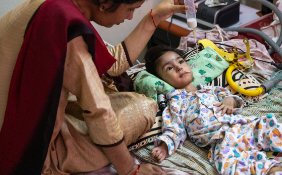Scientists capture stunning real-time images of DNA damage and repair
For years, researchers struggled to directly observe these repair events as they occurred. Many traditional approaches required killing and preserving cells at different time points, producing only isolated snapshots instead of a continuous view.
A New DNA Damage Sensor for Living Cells
Scientists at Utrecht University have now introduced a sensor that changes this situation. Their tool allows researchers to watch damage appear and fade inside living cells and also inside living organisms. According to the study published in Nature Communications, this capability opens the way to experiments that were previously out of reach.
Lead researcher Tuncay Baubec describes the approach as a method for looking inside a cell "without disrupting the cell." He notes that common tools such as antibodies and nanobodies often bind too tightly to DNA, which can interfere with the cell's own repair systems.
"Our sensor is different," he says. "It's built from parts taken from a natural protein that the cell already uses. It goes on and off the damage site by itself, so what we see is the genuine behavior of the cell."
How the Fluorescent Sensor Works
The system relies on a fluorescent tag attached to a small domain taken from one of the cell's own proteins. This domain briefly recognizes a marker that appears only on damaged DNA. Because the interaction is gentle and reversible, the sensor highlights the affected region while leaving the cell's repair work untouched.
Biologist Richard Cardoso Da Silva, who helped design and evaluate the tool, recalls the moment he recognized its potential. "I was testing some drugs and saw the sensor lighting up exactly where commercial antibodies did," he says. "That was the moment I thought: this is going to work."
A Continuous View of DNA Repair
The contrast with older methods is striking. Instead of running many separate experiments to capture different moments, researchers can now watch the entire repair sequence as a single continuous movie. They can track when the damage appears, observe how rapidly repair proteins arrive and see when the cell resolves the issue. "You get more data, higher resolution and, importantly, a more realistic picture of what actually happens inside a living cell," says Cardoso Da Silva.
#DNA
#Genetics
#Genomics
#MolecularBiology
#DNATechnology
#GeneticEngineering
#CRISPR
#GenomeEditing
#DNAScience
#Biotechnology
Website Link : cellbiologist.org
Nomination Link : cellbiologist.org/award-nomination/?ecategory=Awards&rcategory=Awardee Contact Us: info@cellbiologist.org
Follow Us On :
Twitter : twitter.com/account/access
Linkedin : .linkedin.com/in/research-scholar-10278a323/
Tumblr ; tumblr.ccom/




Comments
Post a Comment